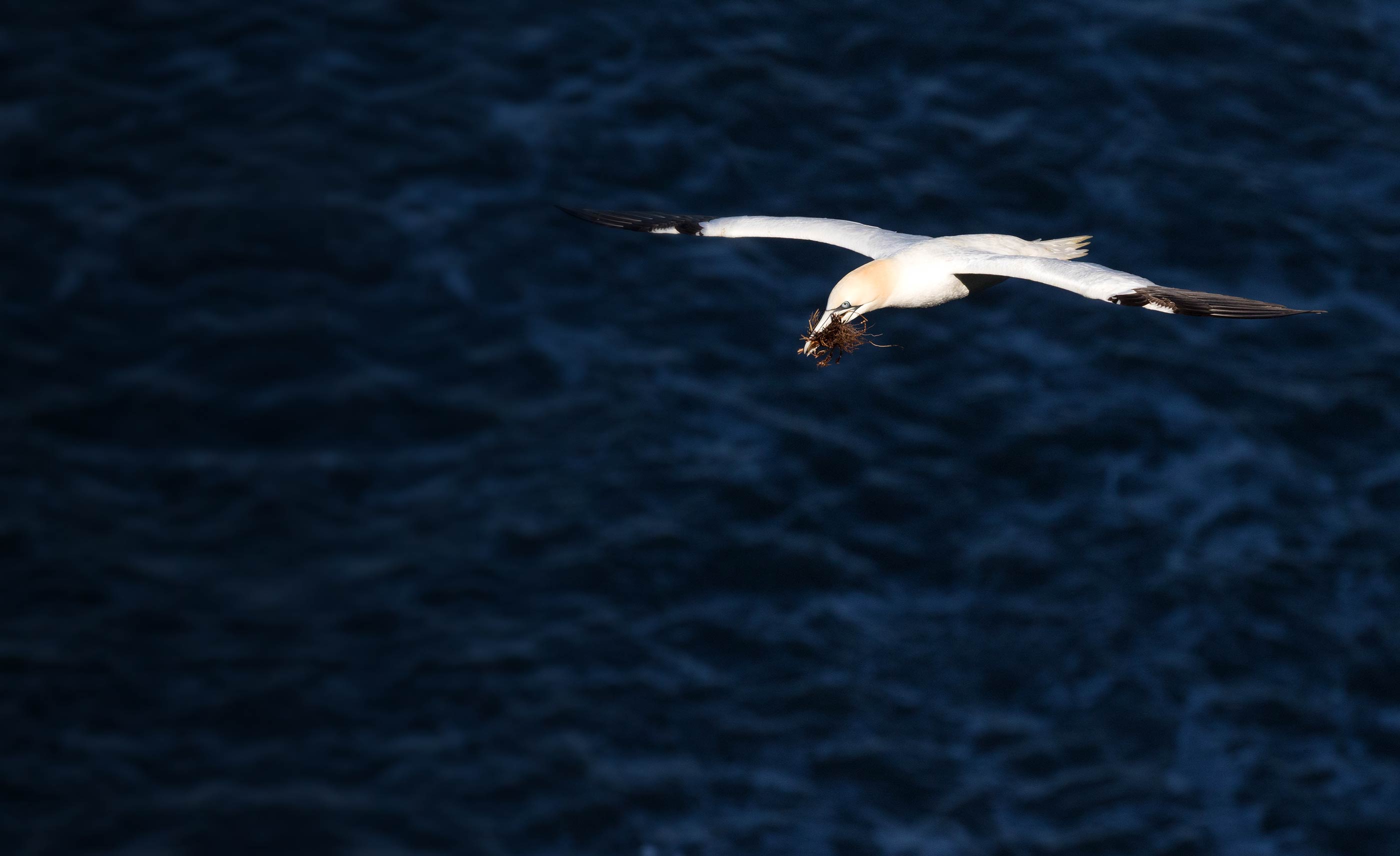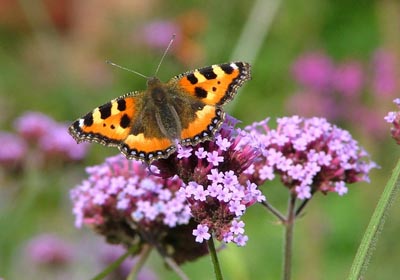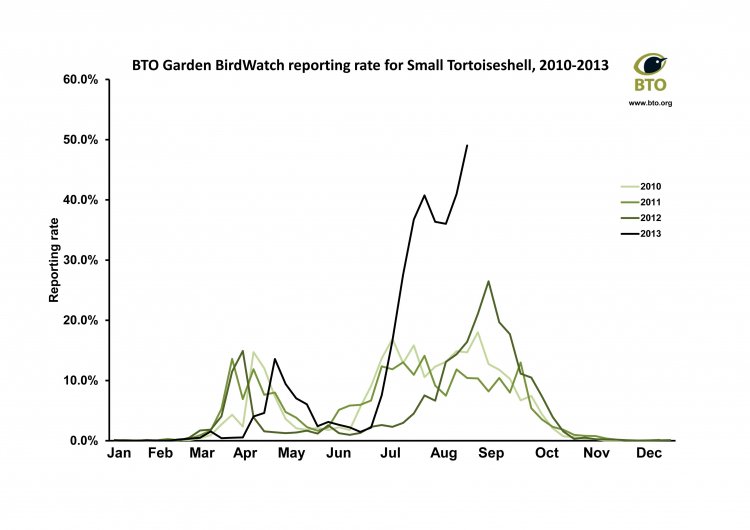A flutter of Small Tortoiseshells
Through weekly observations from BTO Garden BirdWatch participants, we can determine patterns of how different species use our gardens throughout the year. This shows how they fare year to year, and helps us understand what might be driving the patterns.
Butterflies are one group of invertebrates that we have been following closely this year. With a wet summer last year, followed by cold weather this spring, butterflies had a slow start at the beginning of the summer with emergences up to four weeks late.
The hot weather of early July was a turning point for many butterfly species with the weekly reporting rate increasing rapidly. The most dramatic of these increases was for the Small Tortoiseshell. Although numbers normally escalate around this time of year, with new butterflies emerging from the second brood of the summer, the reporting rate has exceeded expectations for this time of year, and is double that of last year.
This is good news for Small Tortoiseshells which have suffered from an overall decline in their abundance. However, it is not overly surprising – the Small Tortoiseshell has always been subject to abundance fluctuations with very low numbers some years and high numbers in others. This has been linked to spring and early summer temperatures which affect the butterflies as well as their larval parasitoids.
This year’s boost for Small Tortoiseshells is probably due to three reasons. Firstly, the long period of dry, hot weather has been good for both butterflies and the flowering plants they feed on. Secondly, there may have been an influx of immigrant Small Tortoiseshells from the continent, benefitting from the warm weather and boosting our British population. Finally, it is possible that the parasitic fly Sturmia bella, which is thought to be a partial cause of the overall decline of Small Tortoiseshell, is at a low in its population cycle.
Small Tortoiseshells will currently be feeding up before going into hibernation in the colder months. Look out for them on nectar-rich flowers such as Buddleia, Hebe and Michaelmas daisies in your garden.








Share this page